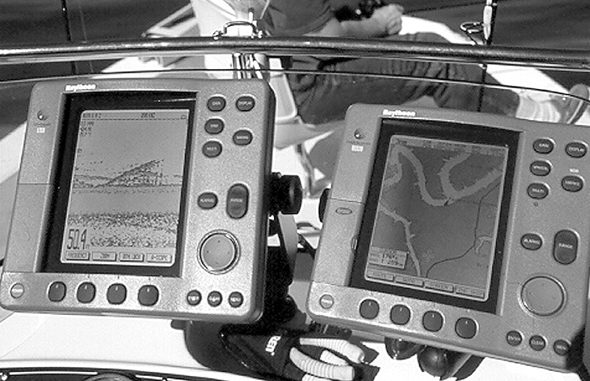
Pool 2 of the Red River is a tough fishery, but one angler has found a way to up the odds greatly in his favor.
Reading the owner’s manual for a fish finder or GPS navigator exposes you to terminology found nowhere else. Here is a quick primer translating some common but important terms in the language of electronics.
PIXEL is an acronym for picture element. Most LCDs have a rectangular grid of pixels laid out checkerboard style in columns and rows. A screen picture is formed as specific pixels are energized to darken or change color.
The more pixels in each vertical column, the better a screen can separate fish from the bottom and show slight changes in bottom contour. The more pixels in each horizontal row, the longer objects stay on the screen before scrolling off. So the vertical pixel count is more important to display detail, while the horizontal count is more a measure of time.
WATTS P-P or WATTS RMS? A fish finder’s power output can be measured and stated two ways, watts root mean square (RMS) or watts peak-to-peak (P-P). The watts P-P rating is always eight times larger than the watts RMS rating for any given unit.
The RMS figure is most often used in scientific and commercial circles and by other people who know what they are talking about. The peak-to-peak watt rating was probably first used as a marketing ploy to make one fish finder look eight times more powerful than another with the same output. The formula (watts RMS x 8 = watts P-P) helps you convert one rating to the other so you can compare apples to apples when shopping for a fish finder.
HIGH, LOW or DUAL FREQUENCY refers to a fish finder’s operating frequency. The speed of sound through water does not change with frequency, but low frequencies are better at penetrating depth and high frequencies are better at separating targets and showing fine detail.
The industry standard for high frequency is 200 kHz and the standard for low frequency is 50 kHz, although other frequencies are available. Dual frequency units can operate at both a high and a low frequency, usually simultaneously while showing both pictures on a split screen. Dual frequency units are preferred by anglers who fish the inshore shallows and offshore depths. They are not the best choice for most fresh water anglers because the high frequency element in a dual frequency transducer usually broadcasts a beam that is too narrow to be of much use in shallow water.
BEARING or HEADING? These navigation terms are not always interchangeable. On some GPS units, bearing (BRG) is the compass direction you should steer to reach your desired destination and heading (HDG) is the direction you are actually traveling. You must steer the boat to match the heading and bearing numbers to get where you want to go. Heading and course over ground (COG) mean the same thing in this case.
SOG or VMG? Speed over ground (SOG) is the speed of your boat in relation to the earth’s surface. Velocity made good (VMG) is the rate at which you are actually approaching your desired destination. If you are zig-zagging to avoid obstacles, you may be traveling 3 feet sideways for every foot forward, and while your boat speed may be 30 mph you may only be approaching your destination at a rate of 10 mph.
CROSS TRACK ERROR (CTE). When you select a destination waypoint and hit the Go To button, your GPS unit draws an invisible line from where you are to where you want to go. If you stray from this line on your way to the waypoint, the unit expresses your distance from the line as cross-track error and shows you which way to steer to get back on course.


